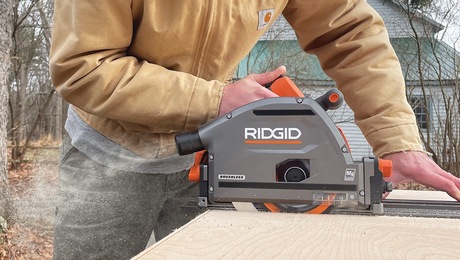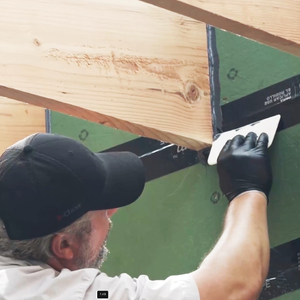Keeping a sealed crawl space dry during construction?
While my home is being built, I am having condensation issues under my Advantech subfloor in the sealed 4 foot crawlspace and it is starting to produce mold. Since it is winter, I cannot run a dehumidifier under there, certainly not at night because it just freezes the coils in the dehumidifier, but sometimes during the day I can run it if its a warm day – but that isn’t nearly enough to keep this from happening.
Right now I have run an extension cord in to the crawlspace and am running a series of high velocity fans to keep air circulating down there, as well as to bring in fresh air from the access hole in the floor (which is how I get down there)
I’m spraying white vinegar on the bottom of the Advantech to fight the mold, but obviously this does not solve the moisture issue causing the mold in the first place.
What can I do to help this situation while the house is being built? I won’t be in the dry for another month AT LEAST, and even after that I won’t have the place conditioned using its own electricity and furnace until probably summer of 2020 sometime.
What should I do?
By the way, for more information, the entire crawlspace floor is sealed concrete with a vapor barrier under the concrete and the stem walls surrounding the crawlspace are 4 feet high. I do not have any insulation down there yet, but am planning to do 2 inches of closed cell spray foam at some point at all the rim joist bays and the entire stem wall.
Thank you.


















Replies
Where are you located, i.e. climate matters..
Central Missouri, Climate zone 4
Your first problem is that you think you have a sealed crawl space. You don't. If you have standing water in the crawl space simply from lack of being "under roof" during construction, then you should be able to pump it out. Snow can be brushed off a deck, ice can be scraped. If you can't easy abate the moisture by any of the three above methods, then you don't have a sealed crawl space. Check your foundation sealing and drainage details. Chances are that's your problem, not the Advantech.
The second is that you think your crawl space is producing mold. It isn't; microrganisms do not live in space. Mold is produce by the presence of 3 conditions:
1. above freezing temperatures
2. relative humidity sustained at or above 70%
3. Available food source for microorganisms.
So remove one or all of the above conditions and you no longer are able to sustain mold growth. If your building in the winter, chances are the first two don't apply anyhow. Also, if you had mold or mildew on the underside of your Advantech decking, chances are it would be more prevalent on your joists which would be closer to the moisture source and be less treated with propriety sealers--and a structural element you totally ignore. Seems like you really want to blame your problem specifically on the Advantech product. Why?
Lastly, a 4' crawl space is plenty of space to allow air flow between a moisture source and wood framing. Min. code is 18" which is written to that specification for reason.
Care to guess why?
I never said anything about standing water. You're reading stuff into my posts that isn't there. I had condensation on the concrete walls and in the joist bays and under the decking, and that was staying for a long enough period to cause some mold growth.
Since I wrote the post, I learned my problem was not keeping the crawl space COLD enough (it was getting too naturally warm down there due to being sealed at night and when it rained, so I left the hatch open and put high velocity fans near the opening and all around under there to circulate the cold, fresh air, which stopped the condensation and now everything has been staying dry. I was able to kill off the mold by spraying white vinegar on the spots and I'll go back through with a mold stain remover and it should be fine.
I never blamed anything on Advantech. This is crazy; you're just making up things for no reason. I just mentioned Advantech by name to provide more information in the original post. Geez dude.
Short answer is that opening the hatch and keeping it open to suck down fresh cold air all the time solved the issue. The only problem with that is when its expected to rain or snow, so what I did last time was simply prop open the hatch so air can still get down there to the fans and the 45 degree angle of some scrap Advantech shields a significant amount of precipitation from entering the hole. Not a perfect solution, but working much better than what I was doing which was closing the hole up.
??
Your knowledge of basic physics is questionable. Your crawl space does not "suck down" fresh cold air all the time through a single hatch. It couldn't possibly do that because you have no positive air flow whereby it could be sucked in. All you're doing is pushing around moisture inside your moisture pit...and killing (with a white vinegar acid bath), the microorganisms that are feeding on the food source and habitat you're providing them. Second, if your crawl space walls are sufficiently above grade enough to be cold enough to condense warm air, then the paradox you present is that the crawl space is not below grade enough to absorb enough of the earth's latent heat to a point that a temperature differential within the crawl space atmosphere becomes warm enough to condense on exterior walls. Your problem has only been superficially resolved with the acid bath band aid...and your fans are just wasting energy.
REAL PROBLEM
Trapped precipitation or foundation leaks are providing a condition of "rising damp" in your crawl space walls. Your floors and walls are apparently saturated...and that moisture has no place to go except be absorbed into the surround wood "ceiling" which is the driest material to be found in that environment. Wet moves to dry...naturally.
ADVICE
Your best bet is stop the moisture from entering the crawl in the first place. Tarp off your project so as to avoid allowing moisture to enter through leaks or whatever hatches you have going on. What you're paying in wasted energy pushing that moisture around with fans within could probably buy you some effective tarps to keep it out. After that, run a dehumidifier and remove the moisture. If anything is going to sucking, it will be that dehumidifier sucking water vapor out of the crawl, not hatches sucking air in. The heat from the dehumidifier should allow the unit drain line to remain unfrozen. If it really gets that cold, then chances are the ambient R.H. will be low and water and vapor will become less of an issue naturally. Check the results yourself by buying or borrowing a moisture meter and check your framing moisture content (MC). Framing material is typically anywhere from 12-20% during construction...and equilibrates to 7-10% in final service. 20% or more MC and more can support mold and mildew. Would love to know where you are at now-- and where you eventually end up.
I said: It's all dry now. Problem solved. It was getting too warm in the crawl space and now its closer to the outside temp, so its fine now.